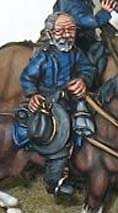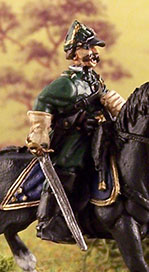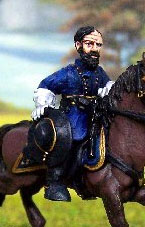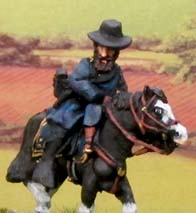Description
Meade was born in cadiz, spain, eighth of eleven children of richard worsam meade and margaret coats butler meade. His brother, richard worsam meade ii, was a future naval officer. His father, a wealthy philadelphia merchant serving in spain as a naval agent for the u.S. Government, was ruined financially because of his support of spain in the napoleonic wars and died in 1828 while meade was a young teenager. His family returned to the united states six months after his father’s death, in precarious financial straits. Young george attended the mount hope institution in baltimore and entered the united states military academy (west point) in 1831, chosen primarily for financial reasons. He graduated 19th in his class of 56 cadets in 1835. For a year, he served with the 3rd u.S. Artillery in florida, fighting against the seminole indians, before resigning from the army, a career he had not intended to pursue, even while attending west point. He worked as a civil engineer for the alabama, georgia, and florida railroad and for the war department. On december 31, 1840, he married margareta sergeant, daughter of john sergeant, running mate of henry clay in the 1832 presidential election. Finding steady civilian employment was difficult for the newly married man, so he reentered the army in 1842 as a second lieutenant in the corps of topographical engineers.Meade served in the mexican-american war, assigned to the staffs of generals zachary taylor, william j. Worth, and robert patterson, and was brevetted to first lieutenant for gallant conduct at the battle of monterrey. After that war he was chiefly involved in lighthouse and breakwater construction and coastal surveying in florida and new jersey. He designed barnegat light on long beach island, absecon light in atlantic city, cape may light in cape may, jupiter inlet light in jupiter, florida, and sombrero key light in the florida keys. He also designed a hydraulic lamp that was adopted by the lighthouse board for use in american lighthouses. He was promoted to captain in 1856. In 1857, meade relieved lt. Col. James kearney on the lakes survey mission of the great lakes. Completion of the survey of lake huron and extension of the surveys of lake michigan down to grand and little traverse bays were done under his command. Prior to captain meade’s command, great lakes’ water level readings were taken locally with temporary gauges; a uniform plane of reference had not been established. In 1858, based on his recommendation, instrumentation was set in place for the tabulation of records across the basin. In 1860, the first detailed report of great lakes was published. Meade stayed with the lakes survey until the 1861 outbreak of the civil war.His civil war appointments were as follows; brigadier general u.S.V. (31st august 1861); commanding 2nd brigade, mccalls division, army of the potomac (3rd october 13th march 1862); commanding 2nd brigade, 2nd division, 1st corps, army of the potomac (13th march 4th april 1862); commanding 2nd brigade, 2nd division, department of the rappahannock (4th april 12th june 1862); commanding 2nd brigade, 3rd division, 5th corps, army of the potomac (18th 30th june 1862); commanding 1st brigade, 3rd division, 3rd corps, army of virginia (26th august 12th september 1862); commanding 3rd division, 1st corps, army of the potomac (12th september 25th december 1862); major general u.S.V. (29th november 1862); commanding 5th corps, army of the potomac (25th december 28th june 1863); commanding grand division, army of the potomac (january 1863); commanding army of the potomac, (28th june 27th june 1865); brigadier general u.S.A. (3rd july 1863); major general u.S.A. (18th august 1864).General meade was to remain in the regular army for the rest of his life. He was a commissioner of fairmount park in pennsylvania from 1866 until his death. He also held various military commands, including the military division of the atlantic, the department of the east, and the department of the south. He replaced maj. Gen. John pope as governor of the reconstruction third military district in atlanta on january 10, 1868. He received an honorary doctorate in law (ll.D.) from harvard university, and his scientific achievements were recognized by various institutions, including the american philosophical society and the philadelphia academy of natural sciences. Meade died in philadelphia from complications of his old wounds, combined with pneumonia, and is buried in laurel hill cemetery. There are statues of him throughout pennsylvania, including a few in gettysburg national military park. The united states army’s fort george g. Meade in fort meade, maryland, is named for him, as are meade county, kansas, and meade county, south dakota. The old baldy civil war round table in philadelphia is named in honor of meade’s horse during the war. One-thousand-dollar treasury notes, also called coin notes, of the series 1890 and 1891, feature portraits of meade on the obverse.





